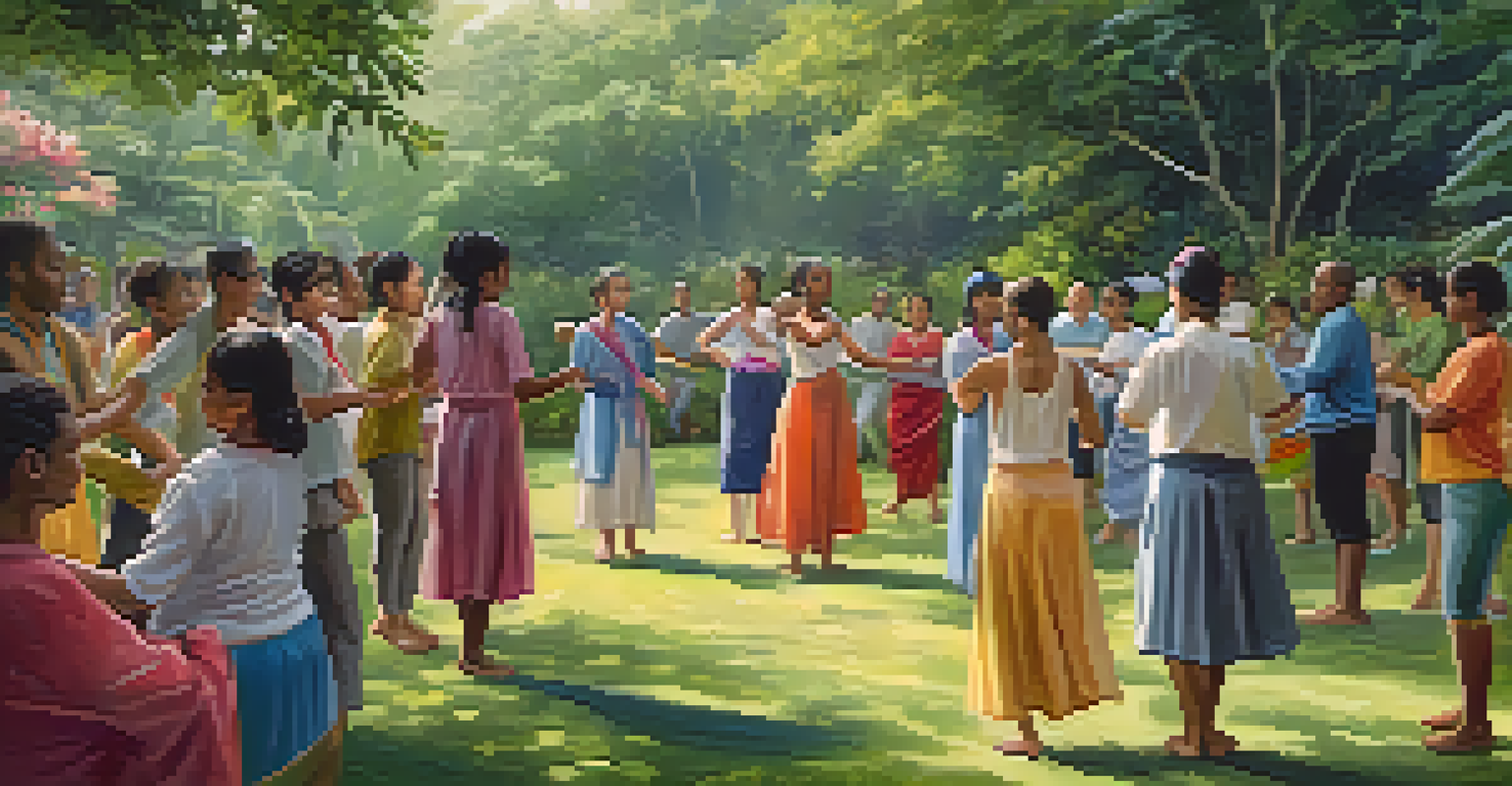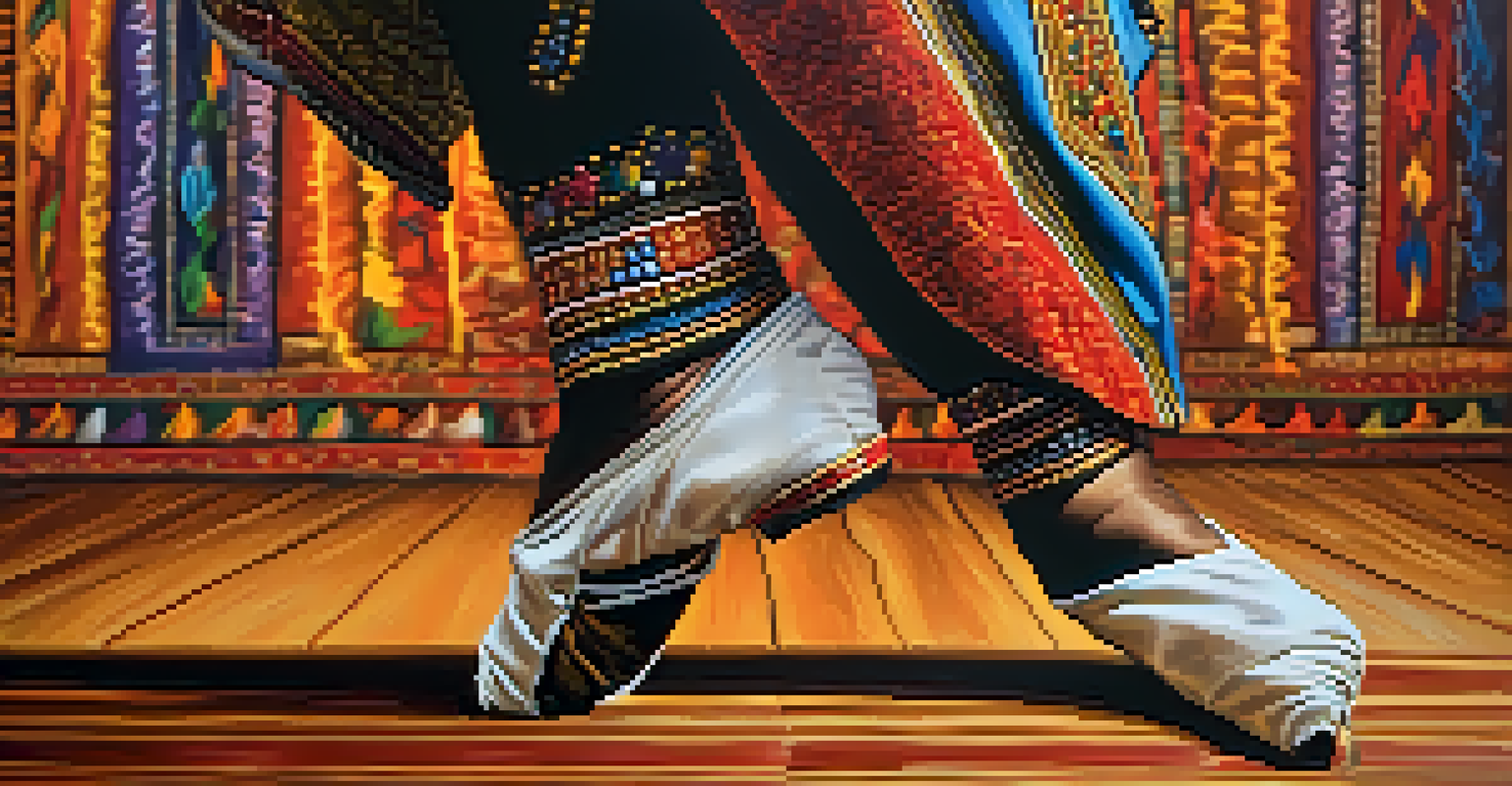Navigating Cultural Sensitivity in Dance Practices

Understanding Cultural Sensitivity in Dance
Cultural sensitivity in dance refers to the awareness and respect for diverse cultural backgrounds within dance practices. It's crucial for dancers and choreographers to recognize the origins and significance of various dance forms. This understanding not only enriches the dance experience but also fosters an environment of respect and inclusivity.
Dance is the hidden language of the soul.
For example, when performing or teaching traditional dances, it's essential to acknowledge their historical context and the communities from which they originate. This helps prevent the appropriation of these art forms, which can lead to misrepresentation and harm. Instead of merely copying movements, dancers should strive to understand the stories and values behind them.
Ultimately, embracing cultural sensitivity in dance allows for a deeper connection to the art form. It encourages a dialogue about identity and expression, opening up pathways for collaboration and innovation that honor the roots of each dance style.
The Importance of Researching Dance Traditions
Researching dance traditions is a vital step in practicing cultural sensitivity. By learning about the cultural and historical backgrounds of different dance styles, dancers can approach them with respect and authenticity. This research can include studying the music, costumes, and rituals associated with the dance, which all contribute to its meaning.

For instance, if a contemporary dancer wants to incorporate elements of Indian classical dance, they should take time to learn about its rich history and the philosophies behind its movements. Engaging with practitioners from that culture can provide invaluable insights and deepen their understanding.
Cultural Sensitivity in Dance
Understanding the origins and significance of diverse dance forms fosters respect and inclusivity.
This commitment to research not only benefits the dancer but also honors the culture they are representing. It creates a more meaningful and respectful performance that resonates with audiences and fosters cultural appreciation.
Engaging with Cultural Practitioners and Communities
One of the best ways to ensure cultural sensitivity in dance is by engaging with practitioners from the cultures being represented. This engagement fosters relationships built on trust and mutual respect. By collaborating with these artists, dancers can gain authentic perspectives and insights that inform their practice.
To know the culture is to know the dance; to know the dance is to know the culture.
For example, workshops led by cultural practitioners can provide an immersive experience where dancers learn not only the steps but also the emotions and stories behind the dance. This interaction enriches the dancer's understanding and helps them avoid stereotypes or misinterpretations.
Moreover, building these relationships can lead to community support and collaboration, creating a vibrant dance culture that celebrates diversity. It’s a win-win situation where both the dancer and the cultural community can thrive together.
Avoiding Cultural Appropriation in Dance
Cultural appropriation occurs when elements of one culture are taken by another, often without proper understanding or respect. In dance, this can manifest when dancers borrow movements or styles without acknowledging their origins. It's essential to differentiate between appreciation and appropriation.
For example, wearing a traditional costume from another culture while performing a dance without context can be seen as appropriative. Instead, dancers should strive to understand the significance of the attire and the movements they are using. This means ensuring that their performance honors the culture rather than exploiting it.
Engagement with Cultural Communities
Collaborating with cultural practitioners enriches the dance experience and promotes authentic representation.
By actively working to avoid cultural appropriation, dancers can help promote a more respectful and inclusive dance environment. This not only benefits the artists involved but also enriches the audience's experience, fostering understanding and dialogue across cultures.
Creating Inclusive Spaces in Dance Communities
Creating inclusive spaces within dance communities is essential for encouraging cultural sensitivity. This means welcoming diverse voices and perspectives, ensuring that everyone feels valued and heard. Inclusive practices can include diversifying teaching methods and incorporating various dance styles into curricula.
For instance, dance studios can host classes that spotlight different cultural dance forms, allowing students to explore and appreciate various traditions. By doing so, they create an environment where cultural exchange is celebrated rather than overlooked.
Ultimately, fostering inclusivity in dance communities helps break down barriers and encourages collaboration. It allows dancers to learn from one another, paving the way for richer, more diverse artistic expressions.
The Role of Education in Promoting Cultural Sensitivity
Education plays a crucial role in promoting cultural sensitivity within dance practices. Dance educators can lead the way by incorporating lessons on the historical and cultural significance of various dance forms into their teaching. This knowledge equips students with the tools they need to approach dance with respect and understanding.
For example, a dance teacher might include a unit on African dance that explores its origins, meanings, and cultural context. By providing this information, they help students appreciate the depth of the art form rather than just its aesthetic appeal.
Education's Role in Dance
Integrating lessons on the cultural context of dance helps students develop respect and appreciation for diversity.
Through education, dancers can develop a broader worldview and a deeper appreciation for the diversity of dance. This ultimately leads to more informed and responsible practitioners who contribute positively to the dance community.
Embracing Intersectionality in Dance Practices
Intersectionality is an important concept to consider in dance, as it acknowledges the multiple identities and experiences that shape individuals. Dancers come from various cultural backgrounds, and their unique perspectives can significantly enhance the dance landscape. Embracing intersectionality allows for a richer exploration of themes and movements.
For instance, a choreographer who identifies with multiple cultural heritages can create a piece that weaves together elements from those backgrounds, showcasing the beauty of diversity. This approach not only enriches the choreography but also resonates with audiences who see their own experiences reflected in the performance.

By embracing intersectionality, the dance community can create more nuanced and impactful narratives. It encourages artists to draw from their diverse backgrounds, fostering creativity and innovation while promoting cultural sensitivity.